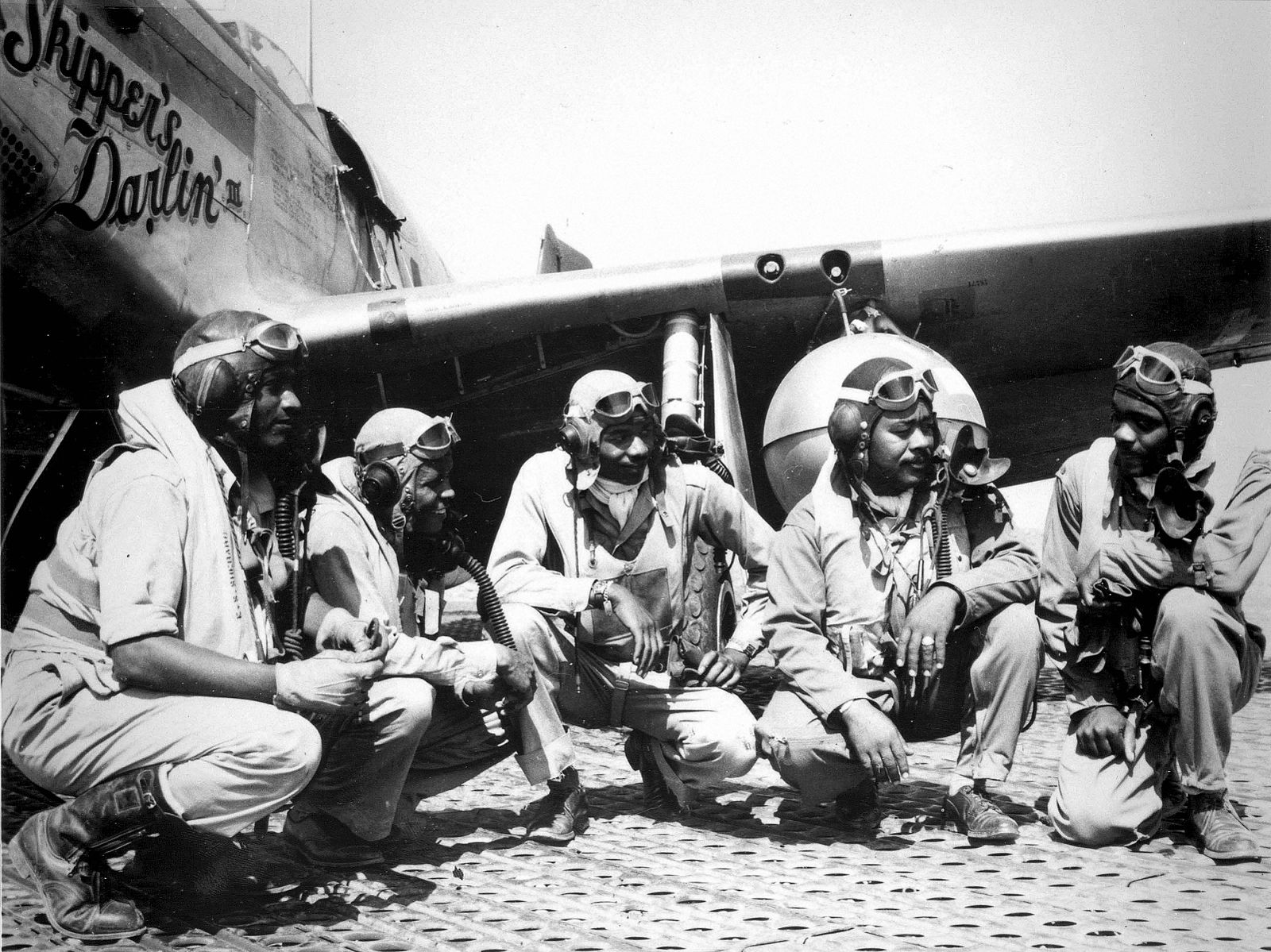On the 24th March 1945, the Tuskegee Airmen (332nd Fighter Group and the 477th Bombardment Group) of the United States Army Air Force shot down three German jets in a single day. Colonel Benjamin O. Davis led the attack with B-17 bombers, targeting a Daimler-Benz tank factory in Berlin, which was heavily defended by Fw 190 radial propeller fighters, Me 163 “Komet” rocket-powered fighters and 25 Me 262s of the Luftwaffe. Charles Brantley, Earl Lane and Roscoe Brown each shot down one of the German jets, earning the 332nd Fighter Group a Distinguished Unit Citation.
Feared by their German opponents and labelled the 'Schwartze Voglemenschen' (Black Birdmen), the Tuskegee Airmen have a fascinating history which is captured in Aviation Elite Units 24: 332nd Fighter Group by Chris Bucholtz. Below is an extract of the fighter group’s origins.
In the late 1930s and early 1940s, America saw itself as a bastion of freedom and equality, especially in light of the horrors that fascism and totalitarianism were visiting upon Asia and Europe at the time. World War 2 pitted the USA against natural opponents – the militaristic Japanese Empire and despotic Nazi Germany. To most American citizens, the war represented a natural conflict between their virtuous way of life and the immorality of their Axis foes.
To the African-American community, however, the notion that World War 2 marked the start of a struggle against violence, discrimination and racial inequity was patently absurd. For many of them, this struggle already defined their lives. Pre-war America was a divided nation, with blacks and whites living in two parallel societies. In the southeast USA, segregation was a way of life, with blacks attending separate schools, using different restrooms and eating in different restaurants from whites. In most situations, the facilities for blacks were inferior to those for whites. These artificial boundaries were enforced by a social structure that all but endorsed violence against those who would seek to transcend it.

In the northeast and west of the USA, these formalised structures did not exist, but discrimination was present in a more random, but equally virulent, form.
In the 1930s, the US Army’s treatment of blacks reflected the behaviour of society in general. While black Americans had served in combat, and all-black units had distinguished themselves during the American Civil War, the wars against the Plains Indians, the Spanish-American War and in World War 1, most blacks in uniform were part of ‘service units’, performing menial labour and maintenance roles. Similarly, in the US Navy, the only rate black sailors could hold was mess attendant.
These attitudes permeated the military from the top down, and officials were not hesitant about putting their opinions into print. Chief of the US Army Air Corps, Maj Gen Hap Arnold, wrote in 1940 that blacks could be useful as unskilled labour ‘to perform the duties of post fatigue and as waiters in our messes’. Secretary of War Henry Stimson held a similar view, stating that ‘leadership is not embedded in the Negro race’. Even so, these views did not keep black Americans from aspiring to fly and fight, and in 1939 the door that had been shut began to open. The Civilian Pilot Training Program (CPTP), announced in 1938 by President Franklin D Roosevelt, mandated that 20,000 college students would be trained to fly each year. This legislation excluded black schools and students.
However, in May 1939, as the CPTP was gearing up, barnstormers Chauncey E Spencer and Dale L White embarked on a Chicago-to-Washington, D.C. flight to promote aviation for black Americans. Upon their arrival in the capital, they conducted a meeting with a little-known senator named Harry S Truman. He listened to Spencer and White’s concerns and pledged to help. Truman was especially impressed when he saw Spencer and White’s beaten-up biplane, and according to a contemporary account in the Chicago Weekly Defender, he stated ‘If you guys had guts enough to fly that thing from Chicago, I got guts enough to do all I can to help you’.

A short time later, Congress authorised funds for the extension of the CPTP to several predominantly black universities, and for the training of black students at white colleges. The programme was instituted at Howard University, Hampton Institute, North Carolina A&T, West Virginia State and Delaware State. In all, 2700 black pilots would graduate from the CPTP. At the end of its first year, 91 per cent of the black students that enrolled in the course successfully completed the programme – the same rate attained by white students. On 15 October 1939, Tuskegee Institute (a black university in Alabama) was added to the programme.
To read more about the famous pilots, see Aviation Elite Units 24: 332nd Fighter Group by clicking the link here.


Comments
You must be logged in to comment on this post. Click here to log in.
Submit your comment